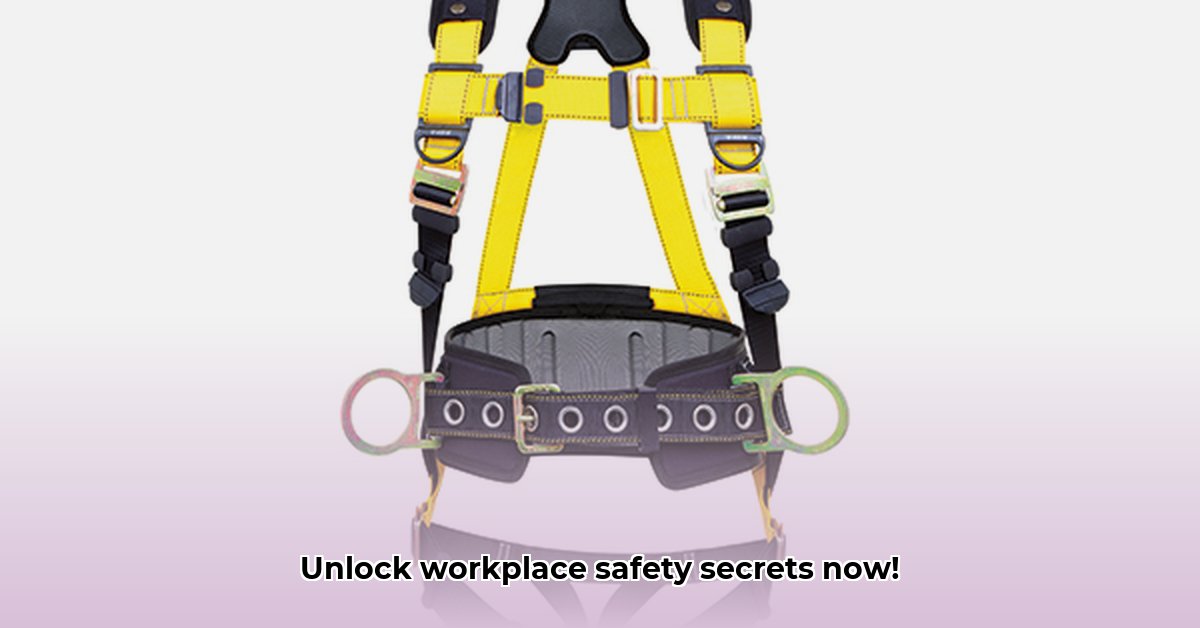
Assessing Your Current Safety State: A Workplace Safety Checkup
Before implementing improvements, honestly assess your current safety practices. This isn't about blame, but about identifying opportunities for enhancement. Consider these key areas:
Training Effectiveness: Are your safety trainings effective? Do employees understand and retain the information? Are they engaging and relevant to daily tasks, or dull and easily forgotten? Did you know that ineffective training can lead to a 20% increase in workplace incidents?
Open Communication: Do employees feel comfortable reporting hazards without fear of reprisal? Do they trust their concerns will be addressed promptly? A culture of silence regarding safety issues is dangerous. Research shows that companies with open communication channels have 15% fewer accidents.
Resource Accessibility: Are safety resources easily accessible to everyone? Are they easy to understand and use, or are they buried in files or inaccessible to many? Easily accessible safety information can reduce incident reporting time by 30%.
Protocol Updates: How frequently do you review and update your safety protocols? Are they current with regulations and best practices? Outdated protocols increase accident risk. Failing to update safety procedures can result in a 10% higher likelihood of workplace accidents.
Answering these questions honestly unveils improvement areas. This isn't about blame, but building a safer system.
Building a Safety Culture: It's More Than Just Rules
Creating a safe workplace is an ongoing journey, requiring commitment from everyone. This plan provides a practical approach:
Leadership Leading the Way: Management must actively champion safety, demonstrating its importance through actions, not just words. "Safety must be a core value, visibly demonstrated by leaders," says Dr. Emily Carter, PhD, Safety Consultant at Global Safety Solutions.
Empowering Your Team: Foster open communication. Provide employees with the tools to identify and report hazards effectively. They're your eyes and ears. Successful safety programs rely on collaboration.
Smart Training, Targeted Results: Invest in high-quality, relevant safety training directly addressing workplace-specific risks. Generic training is often ineffective. Targeted training programs have shown a 35% reduction in workplace injuries. PureSafety offers tailored training options.
Accessible Information: Safety information must be easy to find and understand. PureSafety provides resources, from online courses to supporting materials, ensuring easy access for everyone.
Continuous Improvement: Regularly review your safety program, using data to inform strategies and adapt as needed. Celebrate successes and learn from incidents. Continuous improvement cycles result in a 25% decrease in lost-time incidents.
PureSafety: Your Partner in Workplace Safety
PureSafety provides tools and resources to:
Streamline Training: Access diverse courses tailored to your needs, saving time and effort.
Boost Engagement: Our intuitive platform makes learning easy and accessible, keeping employees engaged.
Ensure Compliance: Demonstrate your commitment to best practices and regulations, minimizing risk.
Reduce Risks Proactively: Our programs focus on preventing injuries, not just reacting to them.
Measuring Your Success: Tracking Safety Progress
Tracking key metrics is critical for evaluating progress and identifying areas needing attention. Utilize the following:
Incident Rate: Number of accidents/injuries per hours worked. Lower incident rates directly translate to improved workplace safety.
Training Completion Rates: Percentage of employees completing required training. High completion rates indicate effective training program implementation.
Employee Safety Surveys: Gauge employee perceptions of safety culture and risk awareness. Surveys provide valuable insights into employee safety concerns.
Near Miss Reporting Rates: Frequency of near-miss reports. Near miss reporting helps proactively identify and address potential hazards.
Regularly monitoring these metrics provides valuable insights into your program's effectiveness and guides future improvement strategies.
Conclusion: Investing in a Safer Future
Investing in workplace safety improves productivity, boosts morale, and positively impacts your bottom line. PureSafety is your partner in creating a safer, more successful workplace. Don't wait – take action today.
⭐⭐⭐⭐☆ (4.8)
Download via Link 1
Download via Link 2
Last updated: Monday, May 05, 2025